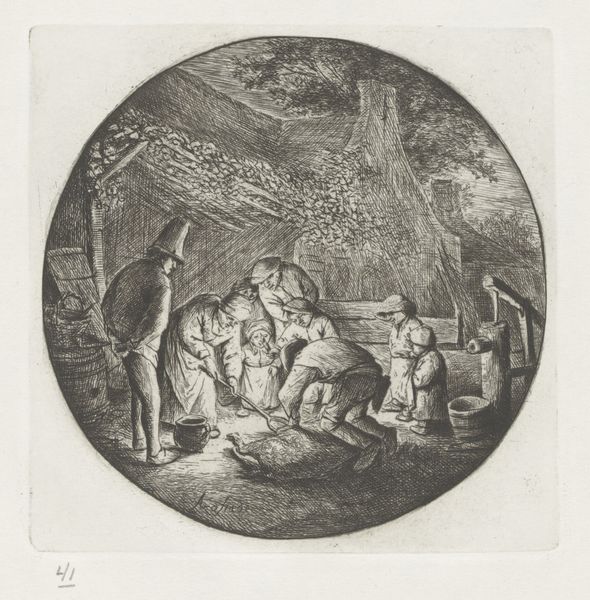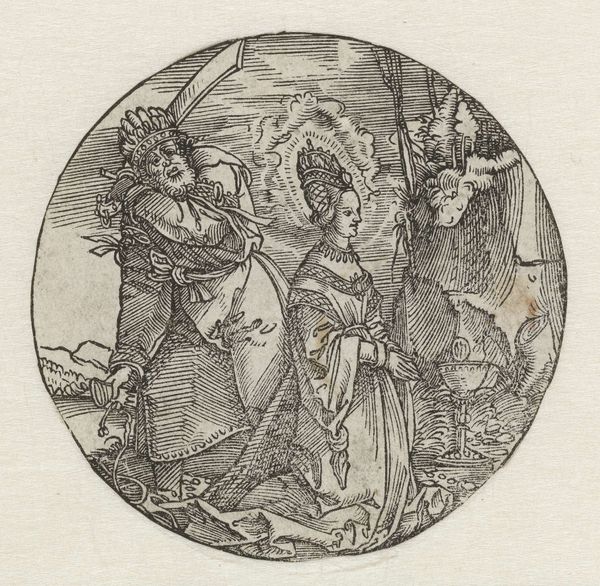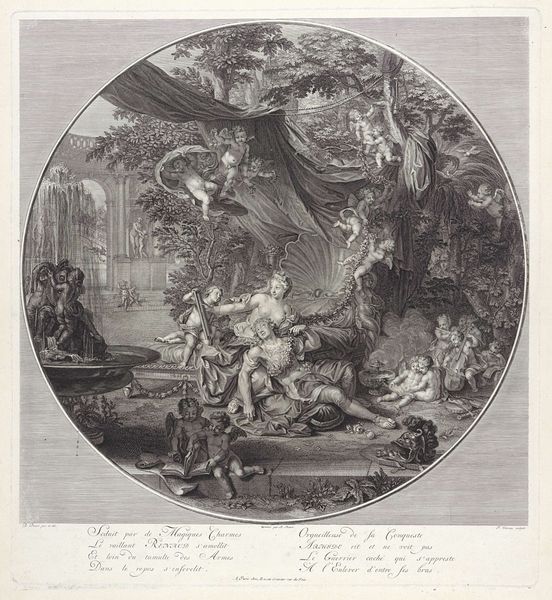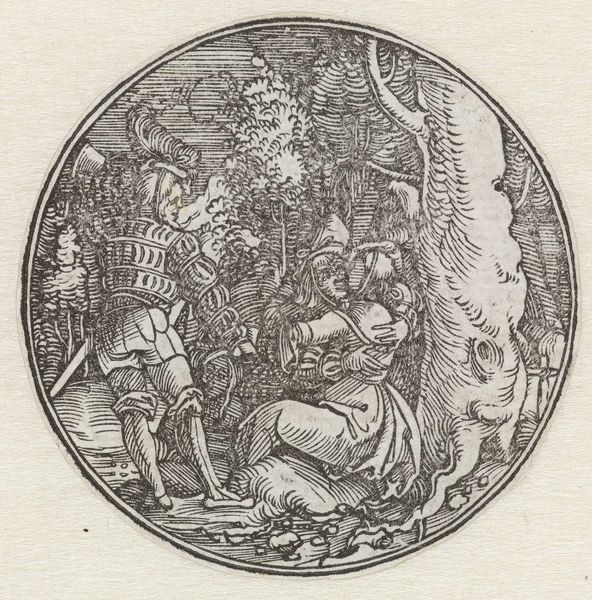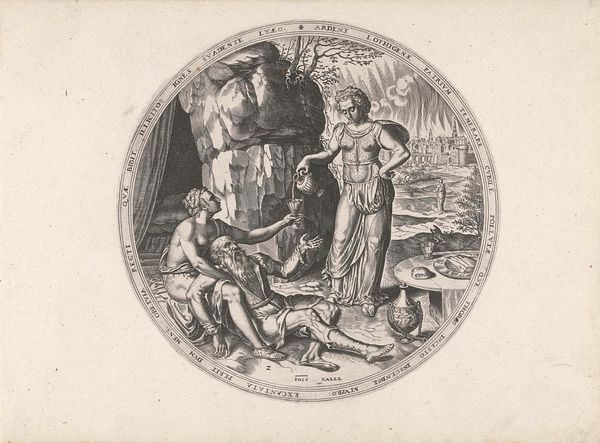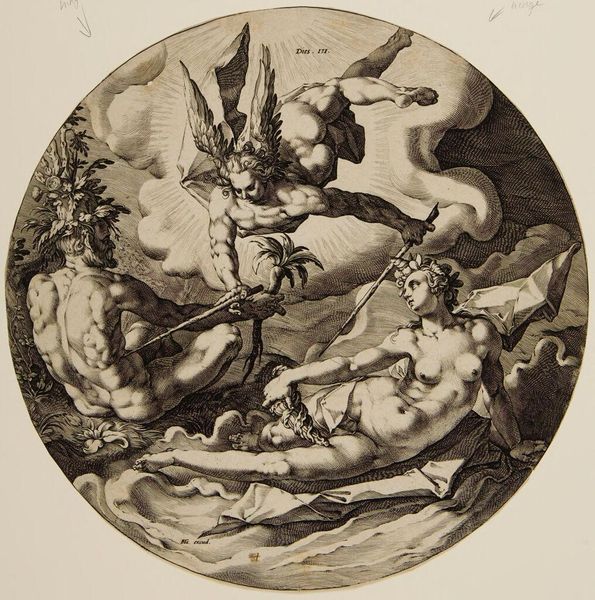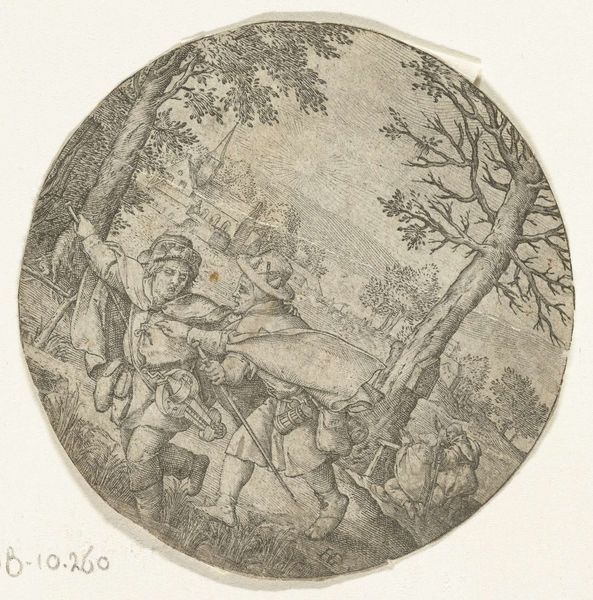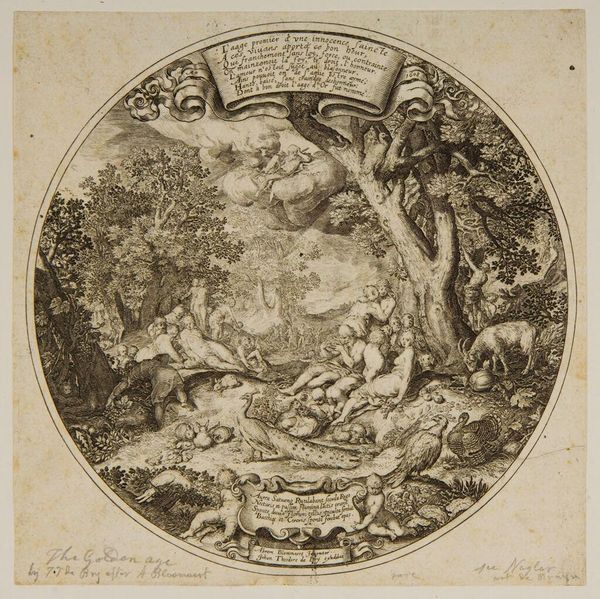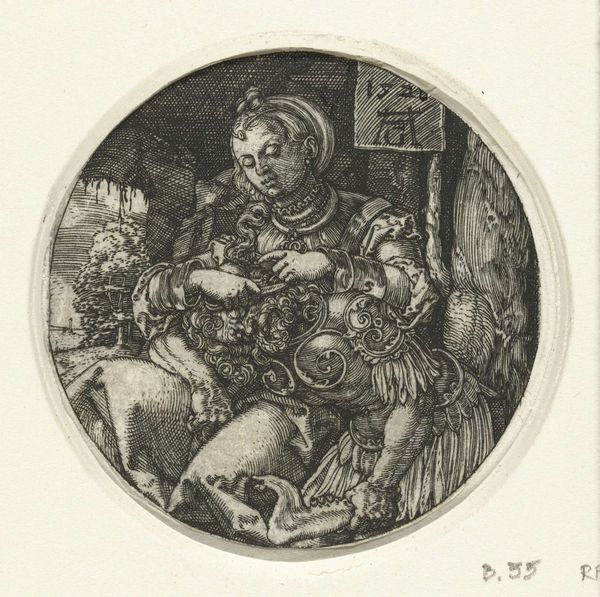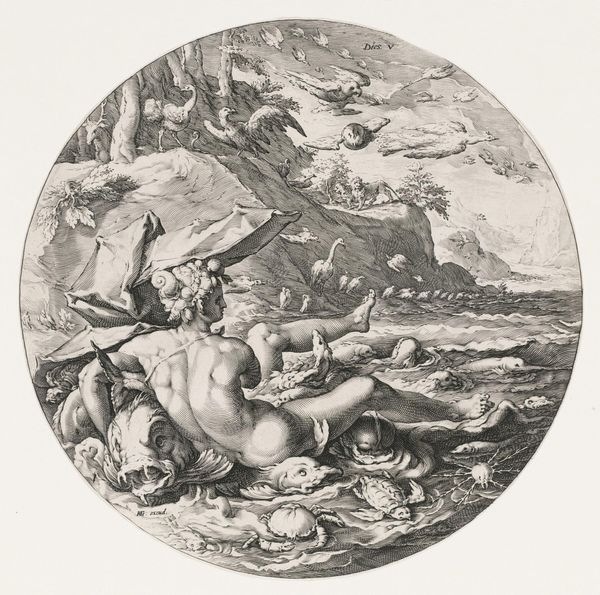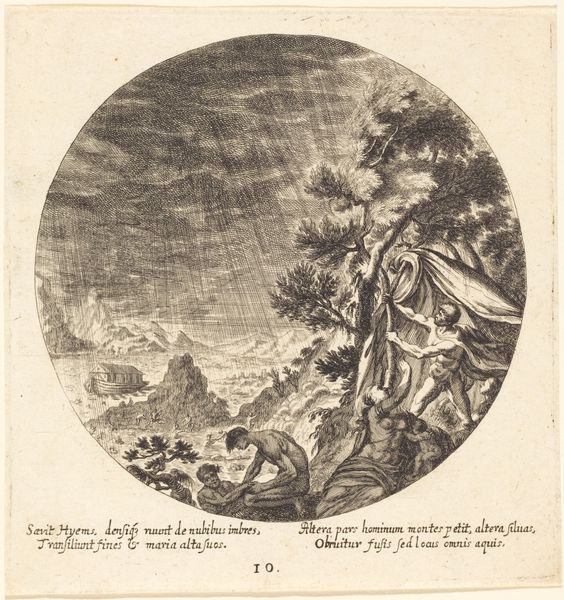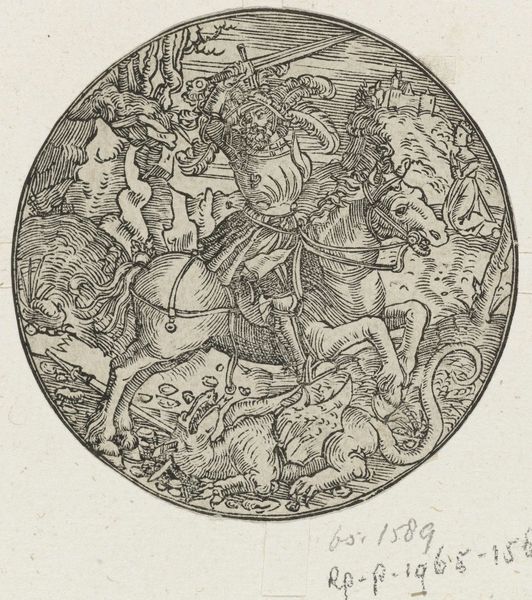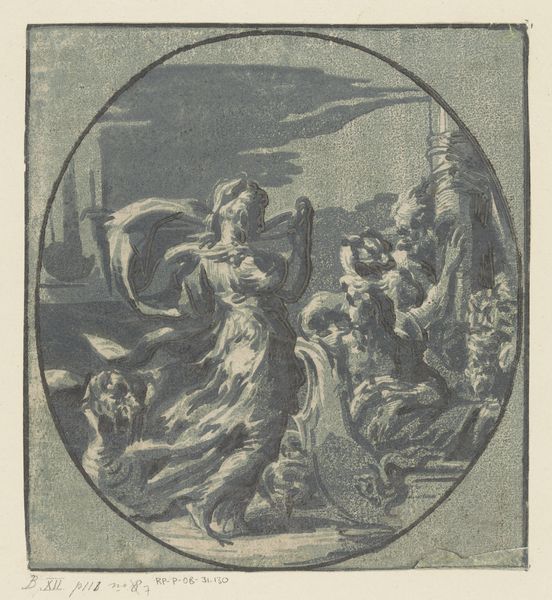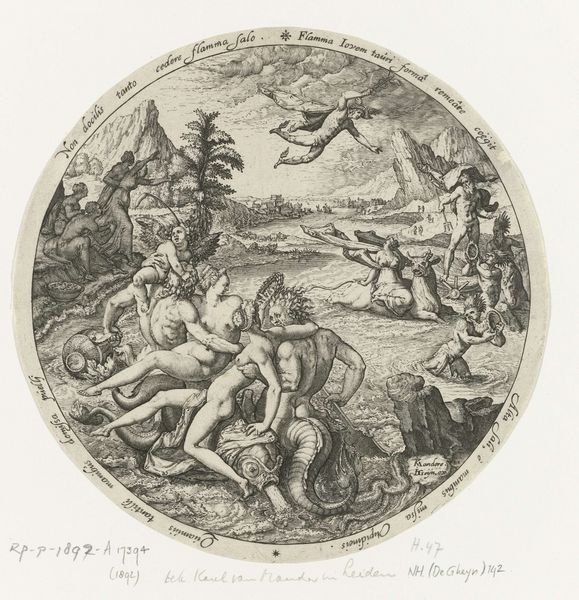
print, intaglio, engraving
# print
#
intaglio
#
figuration
#
line
#
history-painting
#
northern-renaissance
#
engraving
Copyright: Rijks Museum: Open Domain
Curator: Welcome. This print is called “Pyramus and Thisbe” and it was created anonymously sometime between 1500 and 1600. It's a striking example of intaglio, likely an engraving, showcasing the tragic tale. The circular format lends it an almost medal-like quality. Editor: My first thought is: what a grim scene rendered with such fine detail. The linework is incredibly precise, giving it a stark, almost brutal feel. You can really sense the weight of the drama unfolding. Curator: Absolutely. Consider the historical context. This would have been a readily reproducible image, allowing the narrative, a cautionary tale from Ovid’s *Metamorphoses*, to reach a wide audience. It serves as a moralizing, didactic artwork disseminated to warn the masses of the repercussions of disobeying authority. Editor: Right, so its purpose wasn't simply aesthetic appreciation; it's entangled with systems of control and power, especially when thinking about printmaking’s capability of rapidly circulating narratives. But it is an intense, emotionally evocative experience when you examine the material composition and line making process! The artist carefully articulated textures through labor and manipulation. It’s more than just a replication process! Curator: And the way that is displayed reflects social values and beliefs of the time, as the story was displayed to shape morals, while this artwork continues to be circulated in museums and institutions to maintain this historical memory. It shows that tragic love is universally recognizable through culture, even to the current time. Editor: Exactly, and the deliberate craftsmanship – the time etched into the metal plate – speaks to the value placed on transmitting this story. The act of creating many prints, disseminating widely available tragedies, seems strange but a methodically driven method to spread information. Curator: We have to remember the significance of this piece: art becomes embedded with the cultural understanding of value of both then and now. Editor: Precisely, examining the production unveils how society assigned worth, literally through laborious material engagement. The way things were done, the act of reproduction for mass engagement; those efforts and choices of materials are still significant. Curator: It truly highlights how one story can inform our social understanding across cultures and time. Editor: Yes. Now that I see it this way, I can value how history gives value.
Comments
No comments
Be the first to comment and join the conversation on the ultimate creative platform.
